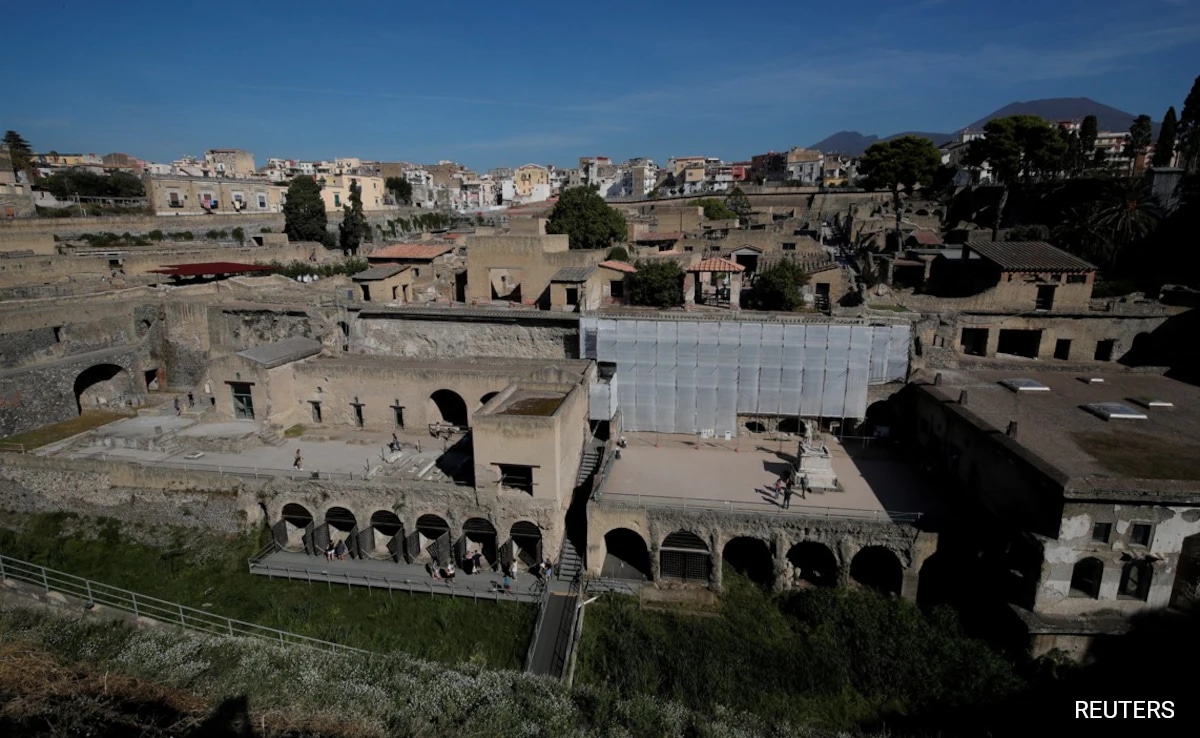Researchers discovered that the brain of a victim from Herculaneum, buried by Mount Vesuvius in 79 AD, was transformed into glass-like fragments resembling obsidian due to extreme heat from a volcanic ash cloud. This unique phenomenon, known as vitrification, occurred when the brain’s organic material rapidly cooled after exposure to temperatures exceeding 510 degrees Celsius. The preserved fragments contained proteins and fatty acids typical of human brain tissue, revealing the exceptional preservation of the central nervous system. The study highlights the dangers of ash clouds, emphasizing the immediate and lethal effects they had on the city’s inhabitants.
Scientists made a startling discovery while examining the remains of a man who perished in bed in the ancient city of Herculaneum after the eruption of Italy’s Mount Vesuvius in 79 AD. Inside his skull, they found dark fragments that resembled obsidian. It was revealed that the eruption had somehow transformed his brain into glass.
This is the only recorded instance of such a phenomenon, and researchers have now explained why and how it occurred.
They report that the vitrification – the conversion into glass – of this victim’s brain was caused by a searing ash cloud that suddenly enveloped the city along the Bay of Naples, leading to the instantaneous death of all its residents.
The researchers concluded that vitrification occurred through a rare process of rapid exposure of the brain’s organic material to extreme temperatures – at least 510 degrees Celsius (950 degrees F) – followed by rapid cooling.
An extensive analysis performed by the researchers confirmed the glass-like nature of the fragments and uncovered their physical properties.
“The glass formed as a result of this process provided integral preservation of the biological brain material and its microstructures,” explained forensic anthropologist Pier Paolo Petrone of Universita di Napoli Federico II in Italy, a key contributor to the research published in the journal Scientific Reports.
The eruption completely destroyed the prosperous ancient Roman cities of Pompeii and Herculaneum.
“The only other instances of organic glass we have identified stem from rare cases of wood vitrification, some of which have been found at Herculaneum and Pompeii. However, no other vitrified organic human or animal remains have ever been discovered in the world,” Petrone added.
Thousands lost their lives, and the two cities were entombed beneath a thick layer of volcanic material and debris, remaining undisturbed until their rediscovery in the 18th century. Victims were preserved in sudden death, much like the individual whose brain was turned to glass.
This person’s body was first unearthed in the 1960s within a structure known as the College of the Augustales, which was dedicated to the cult of Emperor Augustus, who died in 14 AD. The individual was identified as a young man thought to be the college’s custodian. The remains underwent re-examination in 2018.
“In the room where the college’s custodian lay in his bed, I was documenting his charred bones. Under the lamp, I suddenly noticed small glassy remnants sparkling in the volcanic ash that filled the skull,” Petrone stated.
“Upon examining one of these fragments, I observed a black hue and shiny surfaces resembling obsidian, a natural volcanic glass. This glass, however, differed from obsidian as it was extremely brittle and crumbled easily,” Petrone remarked.
Analyses of this material, previously reported in various scientific journals, uncovered the presence of proteins and fatty acids typical in human brain tissues, with the entire central nervous system remarkably well preserved, depicted by nerve cells linked by a dense network of fibers known as axons.
This research is contributing to a deeper understanding of how the tragic events unfolded following the eruption.
“The study indicates that the ‘killer’ at Herculaneum was the early arrival of a hot ash cloud in the town. This underscores the importance of comprehending the behavior of ash clouds, as they are highly hazardous and remain inadequately studied and understood,” noted volcanologist and lead author of the study, Guido Giordano from Roma Tre University in Italy.
The actual entombment of the city occurred in the later phases of the eruption.
The custodian was apparently surprised while sleeping in his bed around midnight by the preliminary effects of the eruption.
“The positions of the victims’ bodies suggest that the college custodian died instantly upon contact with the hot volcanic ash cloud, as did all the residents of Herculaneum,” Petrone explained. “The evidence gathered from the victims at Herculaneum indicates that all individuals died instantly, leaving them no time to notice or suffer.”
(Other than the headline, this story has not been modified by NDTV staff and is published from a syndicated feed.)
